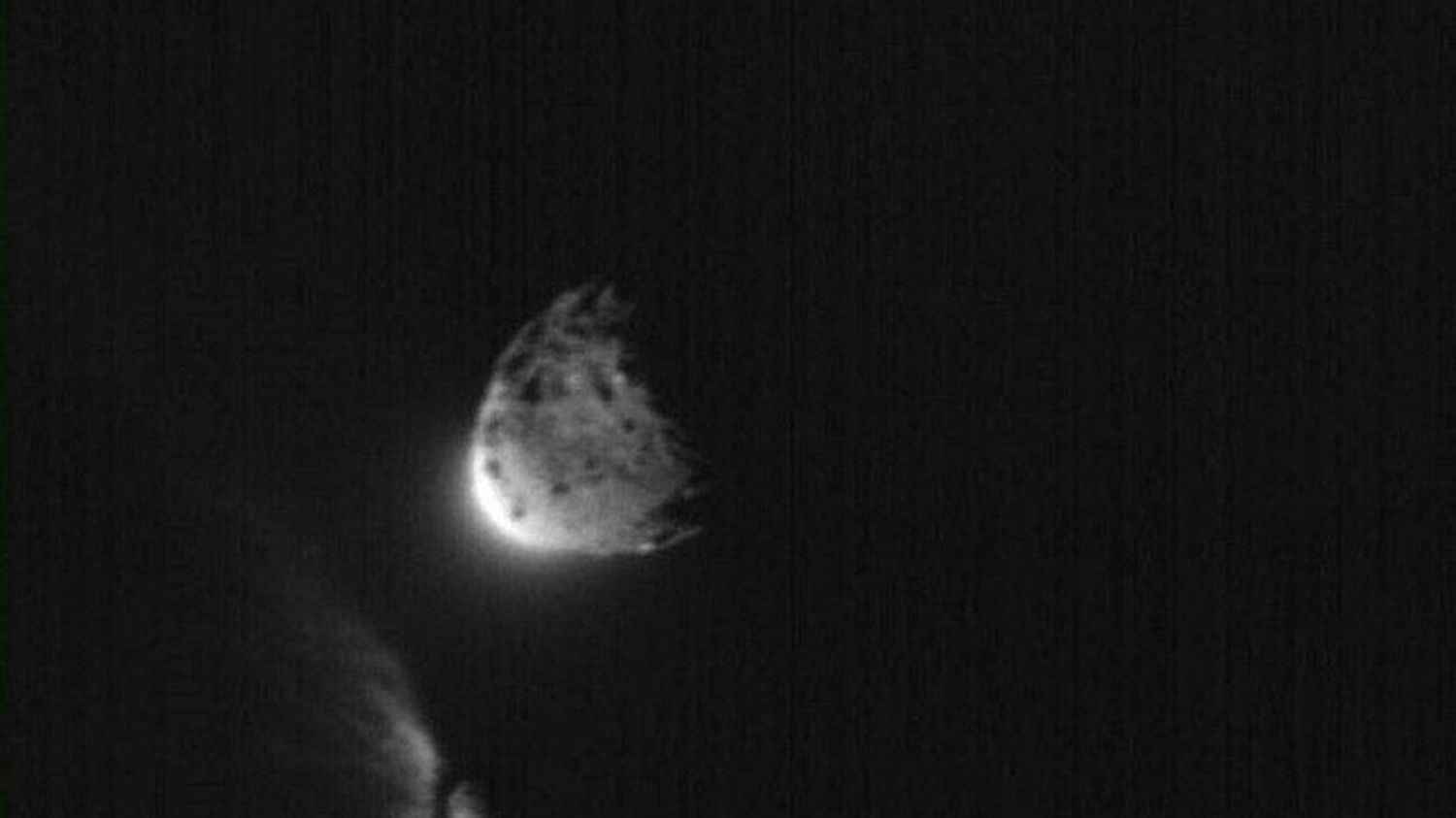“Dart is a first step whose success is incredible”, welcomes Wednesday, October 12 on franceinfo Patrick Michel, research director at the CNRS, at the Observatory of the Côte d’Azur, scientific manager of the Hera mission of the European Space Agency. A little more than two weeks after NASA’s Dart mission which made it possible – at the end of September – to deflect the asteroid Dimorphos from its trajectory.
>>> VIDEO – Mission Dart: a NASA spacecraft hit an asteroid to deflect its trajectory, a historic first
The scientist reviews the initial lessons that can be learned and the next steps. “We have Hera coming to complete […] to give us the result of the impact […] Without this information, it is difficult to interpret why we have deviated so much”he explains before adding: “We have already skipped steps [mais] We are still in a learning phase.”
franceinfo: We knew that the mission had succeeded, but what have we learned with the data collected over the past two weeks?
patrick michael : It is absolutely extraordinary. Thanks to this Dart mission, we demonstrated that we were able to hit an object 11 million kilometers from us, knowing at the start only the size of the object and discovering an hour before the impact – in a way autonomous for the probe – the form when managing to type in it. The second thing is that we have actually succeeded in deflecting the trajectory more than we had anticipated thanks to an internationally coordinated observation campaign from Earth: we have around thirty telescopes covering almost all the continents and which have organized themselves to be able to take this measurement and that I find extraordinary.
How did Europe and France participate in this mission? ?
France took part because several of us are members of the Dart team. You should know that this Dart and Hera project was born first in Europe in the 2000s, then from a conversation between myself and an American colleague who proposed to the ESA (European Space Agency) and NASA to do a diversion mission together. France was therefore involved from the start in this mission and also in the ground observation component since we have a telescope in Antarctica called Astep – which belongs to the Observatory of the Côte d’Azur – and other instruments that helped measure this change in Dimorphos’ trajectory.
What perspective does it open to us?
We have started this roadmap well, which should lead us to have a valid plan that we can offer to future generations to face this risk the day it materializes, so that they do not have to improvise. that day because there are several stages to go through: first you have to be able to predict the threat, prevent it and you have to be able to coordinate internationally, both politically and legally. At the UN, we have working groups that try to have a coordinated organization at this level. Dart is therefore a first step whose success is incredible, it’s great, and we have Hera who will arrive to complete. Without this mission which will come in four years to give us the result of the impact: what was the size of the crater? How much deviation did we produce? What is the internal structure of this object? etc Without this information, it is difficult to interpret why we have deviated so much.
Will there be more missions like this to refine?
There we know that this technique seems to work well and we will be able to quantify all that with Hera but we are still in a learning phase. They were thought to be boring little rocks in space and in fact asteroid missions have revealed to us small worlds of extraordinary geological complexity. The goal is at some point to no longer be surprised and to know what we are dealing with. So it was a first step and we have other missions that will see objects that cross the trajectory of the Earth without deviating them for the moment to learn even more about their diversity. But it’s a first step and from the first test we managed to do something beyond our expectations. So we have already skipped steps. Today, in any case, of all the objects that we know of, there is none that threatens us for at least a century. To know also that all this allows to develop technologies and to learn scientifically on the remains of the bricks which formed our planets which constitute these asteroids.
